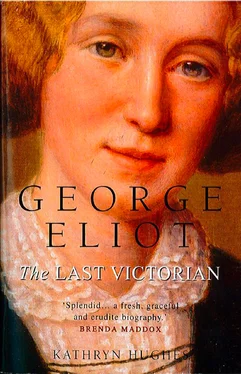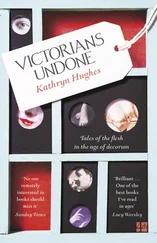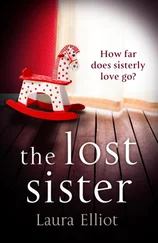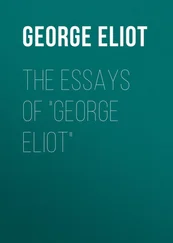At the age of twenty Mary Ann Evans was not to embark on her novel writing for another decade and a half. But the sickness and despair suggest that she was already engaged in a bitter struggle with a part of herself which insisted on expression. During these dull, miserable years she fought to overcome an overwhelming and ill-defined sense of destiny which she placed under that pejorative umbrella ‘Ambition’. The letter to Elizabeth Evans in March 1839 shows that she already had some inkling that much of her religiosity was nothing more than the desire to stand well in the world. But when she turned to the possibility of a more active kind of achievement, of the sort represented in the biographies she loved to read, she was brought up short by the lack of possibilities open to her. When in 1841 she moved to Coventry with her father, the delighted Misses Franklin introduced her to their accomplished friends ‘not only as a marvel of mental power, but also as a person “sure to get something up very soon in the way of a clothing-club or other charitable undertaking”’. 52 This, baldly put, was the full scope of activity open to the prosperous, accomplished middle-class girl. Unlike the Franklins themselves, Mary Ann could not even find a vocation in teaching. The universities and professions were not open to her. Surely the cleverest, saintliest girl in the school could not be expected to spend her life getting up a clothing club?
Writing was one possibility. In the previous generation respectable women like Jane Austen and Hannah More had found success. No particular qualification was needed, and there was the great advantage that you could write at home, well away from the market-place in which no lady could be seen to participate. From her earliest years Mary Ann had toyed with the idea that her destiny might be literary. An anecdote from her childhood has her so entranced by Scott’s Waverley that she commits a large chunk of it to heart. 53 Her surviving school notebook from around the age of fifteen contains the beginnings of a novel, ‘Edward Neville’, clumsily modelled on the work of G. P. R. James, who produced a series of poor-man’s-Scott historical fictions during the 1830s. 54 The abandoned ecclesiastical chart, no matter how pious its origins, also suggests a pull towards publication. And in January 1840 Mary Ann finally achieved her dream of seeing her work in print. ‘As o’er the fields’, a poetic leave-taking of the earth and its pleasures as the speaker prepares for heaven, was accepted by the Christian Observer .
The novel, the chart and the poem all represent different kinds of writing which Mary Ann was trying on for size. Her attempts at the last two were easier for her conscience to accommodate, being mandated by her strict faith. The idea of writing fiction was still too dangerous. It involved dissolving into the imaginative state which she had identified as so perilous to the serious Christian searching for salvation. In the celebrated letter of 16 March 1839 which posterity has always found so wry Mary Ann tells Maria Lewis that her early and undisciplined passion for novels has ‘contaminated’ her with ‘mental diseases’ which ‘I shall carry to my grave’.
The same see-sawing between desire and repression, joy and rage, was apparent in her ambivalent relationship with music during these years. Although she continued to have private piano lessons and to play for her father, opportunities for performing in front of others were few. Now Mary Ann adopted a censorious attitude towards those who allowed themselves the pleasure of demonstrating their talent. In another pompous letter to Maria Lewis, written 6–8 November 1838, she reports that she recently attended an oratorio at Coventry and hated every minute of it. ‘I am a tasteless person but it would not cost me any regrets if the only music heard in our land were that of strict worship, nor can I think a pleasure that involves the devotion of all the time and powers of an immortal being to the acquirement of an expertness in so useless (at least in ninety nine cases out of a hundred) an accomplishment can be quite pure or elevating in its tendency.’ 55 This reads strangely from a girl who in later life was to derive such pleasure from music and who would explore the nature of performance and artistry, especially for women, in Daniel Deronda . The ludicrous insistence that she has no ear for music and takes no pleasure in its secular uses suggests that exactly the opposite is the case. Just as in the earlier letter she fought against the recognition that she would like to write a novel and had already tried to do so, here she struggles with her desire to return to the days when she dominated the Franklins’ drawing-room with her piano playing.
At times this battle against love, beauty and imagination became too much. When, in March 1840, desire threatened to press in on Mary Ann from all sides, she broke down completely. Shortly after arriving at a party given by an old family friend she realised that ‘I was not in a situation to maintain the Protestant character of the true Christian’ and decided to distance herself. Standing sternly in the corner, she looked on from the sidelines while the other guests danced, chatted and flirted. Battling with an urge to surrender to the rhythm of the music and also, perhaps, to be the centre of attention, she took refuge first in a headache, then in an attack of screaming hysterics ‘so that I regularly disgraced myself’. 56
The fact that Mary Ann repeated the story in a letter to Maria Lewis suggests that, far from feeling embarrassed by the incident, she was secretly delighted. As she saw it, her shouting and weeping attested to her holiness. For her hostess, the ‘extremely kind’ Mrs Bull, it probably suggested something quite different. Here, clearly, was a young woman in deep distress. As Mary Ann was no longer able to hold together the two parts of herself, the saint and the ambitious dreamer, something would surely have to give.
CHAPTER 3
‘The Holy War’
Coventry 1840–1
FROM THE END of 1839 there were signs that Evangelicalism was losing its constricting grip on Mary Ann. Her reading, which for so many years had been pegged exclusively to God, now began to range over areas which she had previously outlawed. Where once she had warned darkly of Shakespeare ‘we have need of as nice a power of distillation as the bee to suck nothing but honey from his pages’, 1 now she quoted him with unselfconscious ease. She also used her increasing facility in German to read the decidedly secular Goethe and Schiller.
More crucially, she returned to the Romantic poets, whom she had not touched since her faith intensified in her mid-teens. She mentions both Shelley and Byron, men whose scandalous private lives would have disqualified them from her reading list only a couple of years previously. Through them, she entered a realm where the self dissolved luxuriously into feeling and imagination – the very process she had struggled to resist through her hysterical resistance to novel reading and musical performance. She also learned about the authority of individual experience in determining personal morality, even if that meant rebelling against social convention. It was, however, the more sober Wordsworth who particularly impressed her. Investing in a six-volume edition of his work to mark her twentieth birthday on 22 November 1839, she declared, ‘I never before met with so many of my own feelings, expressed just as I could … like them.’ 2 It was an admiration which was to grow to become one of the most enduring influences on her life and work. Wordsworth’s insistence, particularly in ‘The Prelude’, on the importance of landscape and childhood in shaping the adult self gave an external validation to the connections she was now making between her own past and the emerging conflicts of the present.
Читать дальше












